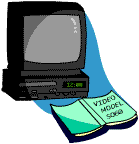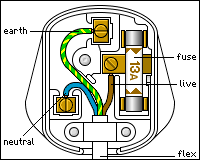The Instruction Manual's Instruction Manual
Created | Updated Dec 12, 2010

As usual Prof Animal Chaos is eager to instruct, advise, and generally improve our minds.
Hold onto your tinfoil hats. It's a wild ride.
The Instruction Manual's Instruction Manual 
We all know and we have seen, with many of you having a drawerful at home of the instruction manuals given with many items of goods, whether it be with electrical goods, or flat-packed furniture, children's construction toys and hundreds of other types of goods.
So here's another manual! To try and help you understand them all.
Assuming that the item purchased is electrical, this is a possible (and of course completely fictional) instruction manual that might accompany the product.
Heading on front of manual: "Open here and move front cover to the left", followed by "lay flat, but do not necessarily make a crease, as this is optional."
Once turned, you will see two pages, one on the left and one on the right.
This is the first page (left side) and for all intents and purposes is the one usually read directly after reading the front of the manual, as this details what is to follow on the following pages. Unless it doesn't! As some are known to have nothing wrote on the first page. If this occurs on your manuals first page, then disregard reading it.
NOTE that the right hand side page, might also be void of the written word (and it will NOT show a page 2).
Page 2. Health and Safety Issues – I have never known ANYONE read this page..
If your product is electrical, just remember to take the plastic cover off the 3-pin plug, which is attached to one end of an electrical wire connected to the appliance, before trying to shove it in the 3-pin electrical wall socket. That is the PLUG and NOT the APPLIANCE of course.

This scenario is the standard, but in various countries of the world, the electrical plug might have a different configuratio.The outcome remains the same, so it shouldn't tax anyone's brains (this is open to individual opinion, but seek expert help if needed and NOT someone on the same level of consciousness as the purchaser of the initial goods.)
Now on to page 3. This can lead to confusion, because many instruction manuals show the contents of the manual on page 2, and in many manuals, there might be three or four page 3's (as shown here):
- page 2
- page 3
- page 3
- page 3
- page 4
To clarify: There is actually only one page 3, so don't go searching within the manual for the other page 3's (even though there might be some, but this will be mentioned later (in this manual).
This is made even more confusing if the following happens:
- page 1
- page 2
- page 3
- page 3
- page 3
- page 5
As this is shown in a "getting started" manual for "windows 98", as in the manual itself and following on from page 3, there IS a page 4 (left-hand side when opened, with page 5 at the right side) – again, laid flat, creases optional.
Now, NOT wanting to put you off purchasing goods because of the manuals that accompany them, but page 4 can throw a wobbler as well, because as you turn page 3 over, you can be confronted by a totally different written language. At this point, do not become distressed, as this is intentional on the part of the manufacturer. Somewhere within the manual you will find your own written language. Persevere in your search, even though all the page headings are still written using the same numerals, i.e., 1,2,3,4,5, etc and as you can see, I've included a 4, to show you that there really is a page 4. These page numbers are repeated at the beginning of each foreign-language set of instructions, so keep reading through until you come across words that you understand. (Again, at this level, seek assistance if needed).
Once you reach the page/s of your native language, you might find drawings/photos of various parts/angles of your product and once again, this can be very confusing, as you could see that the said diagrams and photos do not correspond with your item of goods.
There are three main causes for this:
- The diagrams are a reverse image of your goods, so something viewed on the left could actually be on the right as you look at your goods.
- The diagrams shown in the manual are NOT of your goods, as yours might be a different series or model (Needless to say, if confused at this point, seek professional assistance.
- A production-line worker wasn't concentrating and was talking to others about last nights meal or any other subject in discussion and put the wrong instruction manual in all together.
If option 3 occurs, then tough! If you want to try to rectify that situation by phoning the company on one of the many telephone numbers you'll find in the manual – DON'T, it will cost you more than the price you paid for the goods. For reasons we will not go in to, you'll not understand the person on the other end of the line, anyway, and chances are, you'll be reconnected to various departments (worldwide) and spend "X" amount of time1 explaining the same scenario to each operator and come away none the wiser (DON'T seek expert help on this one, as NO ONE will assist you if they have any sense).
Right! By now you'll have read every page of your new appliance instruction manual (in your individual language) at least 5 times, with the appliance still on the floor or table, and the bits and bobs strewn around the room – leaving you still non the wiser and onto your seventh cup of strong coffee, and wondering if you need take another headache tablet.
At this point, you are left with the last page (page number unknown, as it depends on your manual, don't it?)
In reality, this page should have written in large type:
FORGET READING THE MANUAL IN THE FIRST PLACE AND GET YOUR 5-YEAR-OLD CHILD, OR NEXT-DOOR NEIGHBOUR'S CHILD TO SET THIS UP FOR YOU. IT WILL SAVE VALUABLE TIME AND PREVENT YOU FROM HAVING A BRAIN HEMORRAGE AS YOU TRY TO THINK...........Beyond anyone's expert advice
